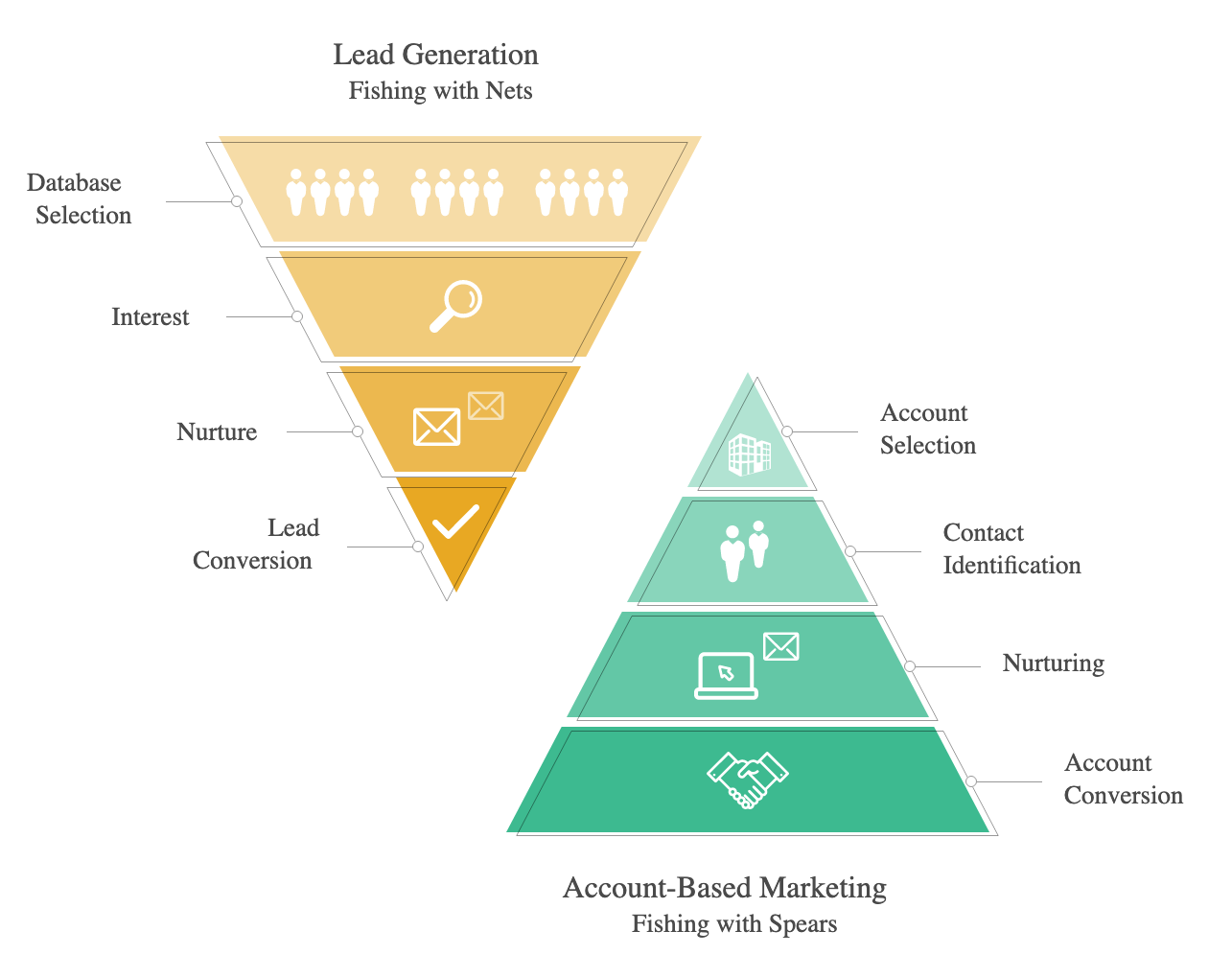In order for companies to succeed in today’s world, marketers need to think about their content and strategies on a global scale.
The Internet has opened doors to new markets around the world, but without paying close attention to the tastes and culture of these new consumers, advertisers will miss out on major opportunities.
So, how do advertisers ensure that their advertising is ready as new markets are opened up?
Localized content is the key to capturing the attention of new customers and creating a place where they want to spend their time and make purchases.
With content built around a personalized experience, you can guide new customers through the lifecycle of their customers, no matter where they live in the world.
In today’s section, we ‘re going to explore what localized content is and when to use it.
When we speak about reaching new global markets, the first thing you can think about is the translation about content. After all, it should be as simple as running your content through Google Translate and sending it to customers on their journeys, right? Not that fast!
Translation is a very complex process. While machine translations like Google Translate can churn through low-value content with relative ease, the high-value content needs a more personal touch — not just the words we use, but how we use them, no matter. Otherwise, we ‘re going to have a conversation without a context, and customers won’t be able to build a relationship with you.
While words matter, there are other elements of your presence in a new market. Consider your website: you might be showing photos that make sense to the North American audience. But would the customer in Asia have understood the photograph? Could they see themselves as one of your customers, please?
This kind of thinking must be evident in every bit of your presence. Pictures and colors should meet the cultural standards of the consumer. Prices are to be shown in their local currency. The logos of the company you present should be known on the market. Such elements all come together and tell your consumers the story of your brand in a conscious and subliminal way.
Companies that understand localization are better suited to adapt their products to the culture , language and mannerism of the consumer. Although translators concentrate on the words of your content, localization also customizes currency, dates, metric units — factors that seem tiny but contribute to a genuinely friendly experience for a global consumer.
The need for regional content is growing in parallel with the growth of global markets. The Web acts as the main platform for attracting these potential clients, with just 7.6 per cent of all Internet users in the world living in North America. More than 50 per cent of them live in Asia as a context. Unless the content is aimed exclusively at North American users, so much of the internet traffic in the world — and the consumers it brings — is missing.
Customers are equally discerning about their purchases, no matter where they live. We expect the same customized brand experience that North American consumers would have received. Once you find content, the desire for personalized experience will drive how you update and adjust content to fit the culture and preferences of a new market.
You will need to do research on cultural norms just as you would be doing with every other aspect of your product or selling process. Did you know that orange has a specific religious connotation in Northern Ireland? Or, if you translate text from English to Finnish, the size of your content might be up to 60%? Your global customers will expect you not only to know these minute differences, but also to create content that capitalizes on them. We want to be as impressed as their English-speaking counterparts are.
It is up to marketers to create content that gives potential customers everything they need to make purchasing decisions. With an attentive eye to researching a new culture, you can set up your brand to create positive consumer interactions and develop brand loyalty.
Obtain information for the Customer Life-cycle
Of course, in order to build brand loyalty, you will need a large amount of content ready to be localized to different markets. Depending on how much content you need, the amount of localization you need will develop very quickly. For example, if you have three customers, you intend to deliver content, and you find content in five languages, you invest time and money preparing one piece of content in fifteen different ways.
Take that example and expand it to websites and other content media that you use, and that number is likely to increase. Once you start to find content, it pays to be careful about which sections you first find. Like your native language-based content, you know that certain sections work far better than others, or that they provide customers with a high amount of value.
When entering a new market, consider that customers will follow the model of the customer lifecycle: discovery, education, purchase, post-purchase engagement and advocacy. Just as you direct a customer through a lifecycle in your native language, your global customers will also buy this way and expect a similar direction to follow.
Because you are already creating content for each stage of your lifecycle, the content is likely to be high-value content that is optimized for localization.
Let’s review the content that needs to be localized at each point of the customer lifecycle.
Discovery
Customers are beginning to become conscious of your business and the goods you sell. At this point, your content focuses on building brand awareness, social media advertising or launching your product offerings. Ensure that content such as product descriptions is translated correctly and that it includes the context of your new market. Many cultures consider video content from brands attractive, so think about finding video content not only with subtitles, but also with local imagery or highlighting items they might have heard about.
Education
Customers have been doing their work and they want to learn more about your company and your products. You may have a knowledge base for your native-language content, with articles or FAQs sharing information about your product offerings or providing thought leadership. Although much of the content in FAQs is repetitive and can be assisted primarily by machine translation, human translators may provide a context for the written material. Human touch to locate high-traffic blog posts can better educate in-language clients.
Purchase
When your customer is ready to make purchases, they should be given a seamless process that makes it easy to buy in-language. Apparently small variables, such as the use of the payment network that is most common in that region, can make a big difference when a customer completes a transaction.
Post-Purchase Engagement
After your customer has completed their order, you want to keep them interested so that they can go back and buy more at a later date. Information such as a thank you email or a follow-up email containing information for new items should be localized in their language. Customer support is also a critical component of customer retention, and both the knowledge base’s self-service content and interactions with customer support staff should represent the needs of individual cultures.
Advocacy
Customers who are satisfied with the goods would want to share their experiences. Their feedback, ratings and reviews will all be in-language and have a specific context that will reach other consumers in the industry. For example, integrating user input like reviews into your website should be a localized process. Reviews of in-country customers written in their native language would have a more successful impact on attracting other customers.
Perhaps the most important thing is that any point of interaction you have with your customers should be in-language. No matter where you are based, each of your customers will have a seamless experience in their own language. When your customers start switching between languages during the consumer lifecycle, they will be searching for a rival who can execute a smooth operation.
As you transcribe your content as part of the localization process , human translators can help to smooth out those potential jarring points and provide your customers with an excellent experience. While machine translation can process most of your content, your human translators will find gaps in context and fill in the shades that the global customer would otherwise notice.
People are buying from you, and the content should be written that way. Human translators help ensure that this is the case and provide extra imagination and cultural awareness to accomplish this within the content. This “transcreation” method updates the idea of localization by delivering the same message that you would have in other countries, but tailoring the content to suit in-language. With transcreation, you can breathe new life into your content and ensure that it has the creativity and cultural knowledge needed to resonate with your new audience.
When to Localize Content
Your content is an important part of your first impressions on a new market. Your potential customers will expect an in-language experience from the first day, and you should be prepared to offer it and be prepared to adapt to changes in the marketplace and culture as they arise.
So when it comes to when you need to locate content, you should think about it right from the start. For example , when designing your website, consider how you can design web pages to make the localization process easier for each international market. In certain cases, each type of content can also be templated to simplify the operation.When you make a picture, create a time-coded script to go along with it. When you need to translate the text for subtitles, you’ll have everything you need to do to make it as effective as possible.
If the company is planning to expand to global markets, it’s time to concentrate on localizing content. With proper research into the cultures and content of your markets prepared for every stage of the customer lifecycle, you can create these critical first impressions on the market and start building brand loyalty with new customers around the world.
![]()



